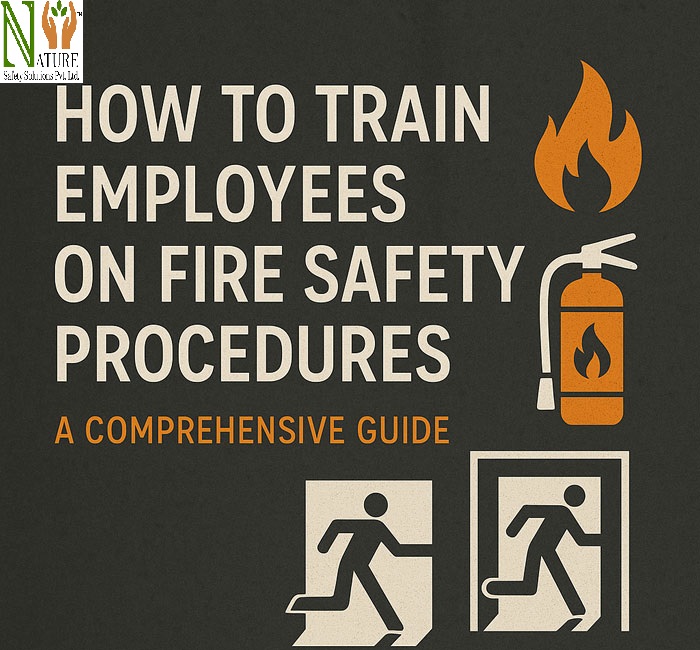Fire safety is a vital component of workplace safety. A single oversight can lead to catastrophic consequences including injuries, property damage, and legal complications. Therefore, training employees on fire safety procedures is not only a regulatory requirement in many industries but a moral and operational responsibility for every employer. This article offers a comprehensive roadmap for effectively training your workforce to be fire-aware, proactive, and prepared in emergency situations.
Conduct a Thorough Fire Risk Assessment
Before any training begins, you must understand your workplace’s specific fire risks. A thorough fire risk assessment is the essential first step. This involves identifying fire hazards, such as flammable materials or ignition sources like electrical equipment, open flames, and heat-generating processes.
It also means identifying people at risk, including employees with disabilities who may need extra help during an evacuation. You must evaluate existing fire safety measures: checking fire detection systems, alarms, extinguishers, and suppression systems to ensure they are well-maintained.
Crucially, assess evacuation routes and exits to confirm they are clear, well-lit, and sufficient for all occupants. Finally, review all current emergency procedures to ensure they are clear, concise, and easily accessible. The results of this assessment will directly guide the content and focus of your entire training program.

Develop a Comprehensive Fire Safety Training Program
Based on your risk assessment, design a training program that covers all essential aspects of fire safety. This should include:
General Fire Safety Awareness:
- Understanding Fire Basics: The fire triangle (fuel, oxygen, heat) and common causes of workplace fires.
- Fire Prevention Strategies: Good housekeeping, proper storage of flammables, safe electrical practices, control of ignition sources, and smoking policies.
- Importance of Fire Drills: Why they are conducted and what to expect.
Emergency Procedures and Evacuation:
- Alarm Recognition and Response: What different alarms sound like and what immediate actions to take upon hearing one.
- Evacuation Routes and Assembly Points: Clearly marked paths, alternative routes, and designated safe assembly areas outside the building.
- Role of Fire Wardens/Marshals: Identifying these individuals and understanding their responsibilities during an emergency.
- Assisting Others: Procedures for helping colleagues with disabilities or those who may need assistance.
- “Sweep” Procedures: How to ensure no one is left behind (if applicable and safe to do so for fire wardens).
- No Re-entry Policy: Emphasizing that employees should never re-enter a building after evacuation until declared safe by emergency services.
Use of Fire Extinguishers (Hands-On Training Recommended):
- Types of Fire Extinguishers: Understanding the different classes of fire (A, B, C, D, K) and which extinguisher types are appropriate for each.
- P.A.S.S. Method: Practical demonstration and hands-on practice using the Pull, Aim, Squeeze, Sweep technique.
- When NOT to Use an Extinguisher: Emphasizing that fighting a fire should only be attempted if it’s small, contained, and an evacuation path is clear.
- Reporting Used/Discharged Extinguishers: Procedures for ensuring replacement and maintenance.
Reporting Procedures:
- How to Report a Fire: Calling emergency services (e.g., 101 in India) and internal reporting protocols.
- Reporting Hazards: Encouraging employees to report potential fire hazards promptly.
Specific Roles and Responsibilities:
- For All Employees: Understanding their individual responsibilities in a fire emergency.
- For Fire Wardens/Marshals: Detailed training on their specific duties, including guiding evacuations, checking areas, and liaising with emergency services.
- For Management/Supervisors: Their role in ensuring compliance, facilitating training, and supporting emergency procedures.
Choose Effective Training Methods
To boost engagement and improve learning retention, use a mix of training methods. Classroom sessions are great for sharing core knowledge, policies, and procedures; make them engaging with presentations, videos, and discussions. Offer practical demonstrations to show employees how to use fire extinguishers, operate alarm systems, and navigate evacuation routes.
Implement the Training Program
Schedule regular training sessions. New hires need initial training. All employees need refreshers annually, or more often if risks are high. Make all training mandatory. Stress its importance and ensure everyone participates.
Keep detailed records of attendance, dates, and topics. This helps with compliance and shows due diligence. Finally, provide accessible materials. Ensure they are available for all employees, including those with disabilities or language barriers.
Evaluate and Improve
Fire safety is an ongoing process. After fire drills, hold debriefing sessions. Discuss what went well and what needs improvement. Gather feedback from employees. If a small fire or near-miss happens, review incident reports. See if training gaps played a role.
Adjust your program as needed. Stay updated on fire safety rules, tech, and best practices. Regularly update your training to reflect these changes. Finally, solicit employee feedback. Encourage suggestions to improve fire safety procedures and training.
Key Considerations for Effective Training:
- Make it Relevant: Tailor the training to the specific hazards and layout of your workplace. Generic training is less effective.
- Use Clear and Concise Language: Avoid jargon. Ensure instructions are easy to understand.
- Emphasize “Why”: Explain the rationale behind each procedure to foster understanding and commitment.
- Engage Employees: Use interactive elements, real-life examples, and encourage questions.
- Lead by Example: Management and supervisors must demonstrate a strong commitment to fire safety.
“By implementing a comprehensive and ongoing fire safety training program, you empower your employees to act with confidence during a fire emergency. This significantly improves the safety and security of your workplace. Always remember—being prepared is the best defense against the devastating effects of fire.”
Also read:-
- Electrical Fire Risks: Prevention Tips for Office and Home
- Creating an Effective Fire Evacuation Plan: A Step-by-Step Guide
- Everything You Need to Know About an EHS Inspection
- Why Environmental Compliance Matters to Business
- OSHA’s New PPE Requirements for Construction: What You Need to Know Now
- Why Environment, Health & Safety Matters More Than Ever

Pingback: Top 10 Reasons Every Business Needs Risk Management -